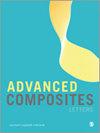Microscratch characteristic and deformation mechanism of SiC particle-reinforced composites at elevated temperatures
IF 2.1
4区 材料科学
Q3 MATERIALS SCIENCE, COMPOSITES
引用次数: 5
Abstract
The effect of temperature on scratching forces for 16% SiC/Al and 45% SiC/Al composites was investigated in this article. The results showed that the mean normal forces for 16% SiCp/Al and 45% SiCp/Al decreased by 80% and 68% at 300°C compared with 25°C, and the average tangential force decreased by 67% and 66%, respectively. The reason was that the strength of composites was reduced with the increasing temperature, which results in a reduction of flow stresses in the primary shear zones. There are three stages occurring in the scratching process according to the cutting tool interacting with different phases with the increasing temperature. The temperature and the particle contents have an obvious effect on the deformation mechanism by influencing the ratio value of the elastic modulus and hardness. It is founded that the friction coefficient increased fast when the temperatures increased from 25° to 300°C for both 16% SiCp/Al and 45% SiCp/Al composites, and the temperature provided a bigger influence compared with the particle contents. Furthermore, two distinct regions of the hardness variation with the increasing temperature for both two composites were observed: (1) a gradual decrease with the temperature up to 285°C and (2) an abrupt dropping above 285°C. Finally, a physical model representing the deformation process considering the elastic recovery and piles up in high temperature has been developed.SiC颗粒增强复合材料高温微划伤特征及变形机理
研究了温度对16%SiC/Al和45%SiC/Al复合材料刮擦力的影响。结果表明,在300°C下,16%SiCp/Al和45%SiCp/A1的平均法向力分别比25°C下降了80%和68%,平均切向力分别下降了67%和66%。原因是复合材料的强度随着温度的升高而降低,导致主剪切区的流动应力降低。随着温度的升高,刀具与不同相的相互作用使刮擦过程分为三个阶段。温度和颗粒含量通过影响弹性模量和硬度的比值对变形机制有明显影响。研究发现,当温度从25°C增加到300°C时,16%SiCp/Al和45%SiCp/A1复合材料的摩擦系数都快速增加,并且与颗粒含量相比,温度提供了更大的影响。此外,观察到两种复合材料的硬度随温度升高而变化的两个明显区域:(1)随着温度升高至285°C而逐渐降低;(2)在285°C以上突然下降。最后,建立了考虑高温下弹性恢复和堆积的变形过程的物理模型。
本文章由计算机程序翻译,如有差异,请以英文原文为准。
求助全文
约1分钟内获得全文
求助全文
来源期刊

Advanced Composites Letters
工程技术-材料科学:复合
自引率
0.00%
发文量
0
审稿时长
4.2 months
期刊介绍:
Advanced Composites Letters is a peer reviewed, open access journal publishing research which focuses on the field of science and engineering of advanced composite materials or structures.
 求助内容:
求助内容: 应助结果提醒方式:
应助结果提醒方式:


